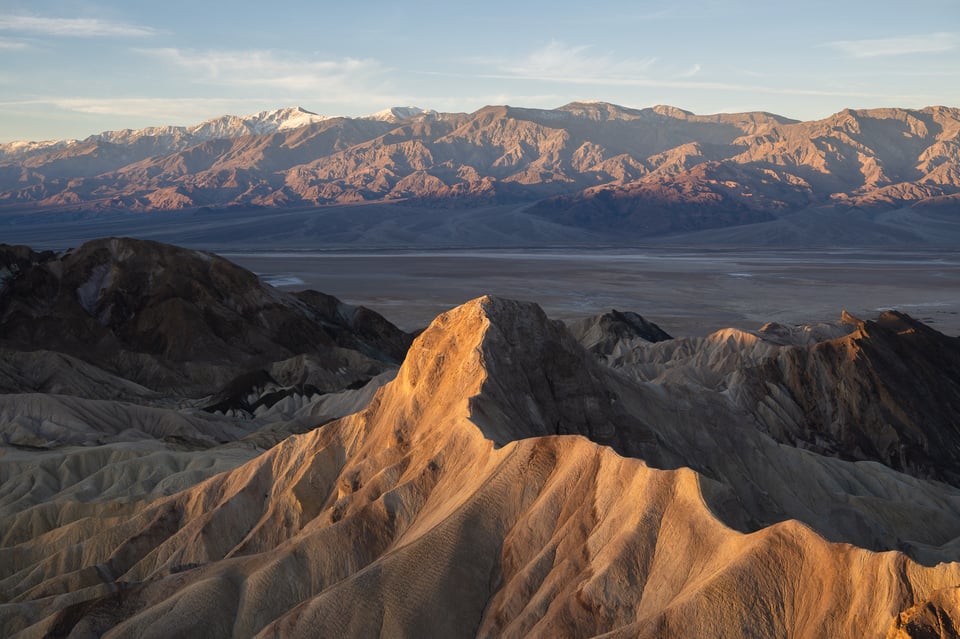Nikon has now released four Z-mount cameras with a DX sensor: the Z50, Zfc, Z30, and Z50 II. You may be wondering how all of them compare, especially with the new Z50 II shaking things up. In this article, I’ll show how all of these cameras stand side-by-side and explain some of the history behind them.

Specifications
You can see how all of these cameras compare, arranged from left to right in chronological order:
| Camera Feature | Nikon Z50 | Nikon Zfc | Nikon Z30 | Nikon Z50 II |
|---|---|---|---|---|
| Announced | October 2019 | June 2021 | June 2022 | November 2024 |
| Camera Type | Mirrorless | Mirrorless | Mirrorless | Mirrorless |
| Sensor Type | BSI CMOS | BSI CMOS | BSI CMOS | BSI CMOS |
| Image Processor | EXPEED 6 | EXPEED 6 | EXPEED 6 | EXPEED 7 |
| Resolution | 20.9 MP | 20.9 MP | 20.9 MP | 20.9 MP |
| Pixel Dimensions | 5568×3712 | 5568×3712 | 5568×3712 | 5568×3712 |
| Sensor Width | 23.5 mm | 23.5 mm | 23.5 mm | 23.5 mm |
| Sensor Pixel Size | 4.22 µ | 4.22 µ | 4.22 µ | 4.22 µ |
| Low Pass Filter | No | No | No | No |
| IBIS (In-Body Image Stabilization) | No | No | No | No |
| Base ISO | 100 ISO | 100 ISO | 100 ISO | 100 ISO |
| Max Native ISO | 51,200 ISO | 51,200 ISO | 51,200 ISO | 51,200 ISO |
| Extended ISOs | 100-204,800 ISO | 100-204,800 ISO | 100-204,800 ISO | 100-204,800 ISO |
| High-Resolution Sensor Shift | No | No | No | No |
| Focus Stack Bracketing | No | No | No | No |
| Pre-Shoot Burst Mode | No | No | No | Yes (JPEG only) |
| Fastest Shutter Speed | 1/4000 second | 1/4000 second | 1/4000 second | 1/4000 second |
| Longest Shutter Speed | 30 seconds | 900 seconds | 30 seconds | 900 seconds |
| Continuous Shooting (Mechanical Shutter) | 11 FPS | 11 FPS | 11 FPS | 11 FPS |
| Continuous Shooting (Electronic Shutter) | 11 FPS | 11 FPS | 11 FPS | 11 FPS |
| Notes for High FPS Shooting | 12-bit raw at 11 FPS (14-bit raw is available at 9 FPS) | 12-bit raw at 11 FPS (14-bit raw is available at 9 FPS) | 12-bit raw at 11 FPS (14-bit raw is available at 9 FPS) | 11 FPS figure is for .NEF files (full-res JPEG at 30 FPS) |
| Buffer Size (Raw) | 35 frames (11 FPS) | 35 frames (11 FPS) | 35 frames (11 FPS) | 200 frames (11 FPS) |
| Autofocus System | Hybrid PDAF | Hybrid PDAF | Hybrid PDAF | Hybrid PDAF with deep learning subject recognition |
| Autofocus Points | 209 | 209 | 209 | 209 |
| Maximum Low-Light AF Sensitivity (Standardized to f/2, ISO 100) | -4 EV | -4 EV | -4 EV | -7.5 EV |
| Standard Flash Sync Speed | 1/200 second | 1/200 second | 1/200 second | 1/200 second |
| Curtain to Protect Sensor at Shutdown | No | No | No | No |
|
Video Features |
||||
| Maximum Video Bit Depth (Internal) | 8 bits | 8 bits | 8 bits | 10 bits |
| Maximum Video Bit Depth (External) | 8 bits | 8 bits | 8 bits | 10 bits |
| Raw Video | No | No | No | No |
| 4K Maximum Framerate | 30 FPS | 30 FPS | 30 FPS | 60 FPS |
| 1080P Maximum Framerate | 120 FPS | 120 FPS | 120 FPS | 120 FPS |
| Additional Video Crop Factor | No | No | No | 1.5x crop at 4K 60p (4K 30p has no additional crop) |
| Chroma Subsampling | 4:2:0 | 4:2:0 | 4:2:0 | 4:2:0 |
| Video Recording Limit | 30 min | 30 min | 125 min | 125 min |
|
Physical and Other Features |
||||
| Card Slots | 1 | 1 | 1 | 1 |
| Slot 1 Type | SD (UHS-I) | SD (UHS-I) | SD (UHS-I) | SD (UHS-II) |
| Rear LCD Size (Diagonal) | 3.2 in | 3.0 in | 3.0 in | 3.2 in |
| Rear LCD Resolution | 1040000 dots | 1040000 dots | 1040000 dots | 1040000 dots |
| Articulating LCD | Single Axis | Fully Articulating | Fully Articulating | Fully Articulating |
| Touchscreen | Yes | Yes | Yes | Yes |
| Viewfinder | EVF | EVF | None | EVF |
| Viewfinder Magnification | 1.02 x | 1.02 x | N/A | 1.02 x |
| Viewfinder Resolution | 2360000 dots | 2360000 dots | N/A | 2360000 dots |
| Viewfinder Coverage | 100 % | 100 % | N/A | 100 % |
| Voice Memo | No | No | No | Yes |
| Headphone Jack | No | No | No | Yes |
| Microphone Jack | Yes | Yes | Yes | Yes |
| Built-in Flash | Yes | No | No | Yes |
| GPS | No | No | No | No |
| Bluetooth | Yes | Yes | Yes | Yes |
| WiFi | Yes | Yes | Yes | Yes |
| USB Type | Type B 2.0 | Type C 3.2 Gen 1 | Type C 3.2 Gen 1 | Type C 3.2 Gen 1 |
| Battery Type | EN-EL25 | EN-EL25 | EN-EL25 | EN-EL25a |
| Battery Life (Viewfinder) | 280 frames | 280 frames | N/A | 230 frames |
| Battery Life (Rear LCD) | 320 frames | 320 frames | 330 frames | 250 frames |
| Battery Life (Eco Mode) | N/A | N/A | N/A | 270 frames |
| Weather Sealed | Yes | Yes | Yes | Yes |
| Weight (Body Only w/ Battery + Card) | 450 g | 445 g | 405 g | 550 g |
| Dimensions (LxHxD) | 127 x 94 x 75 mm (5.0 x 3.7 x 2.9″)1 | 135 x 94 x 54 mm (5.3 x 3.7 x 2.1″)1 | 128 x 74 x 60 mm (5.0 x 2.9 x 2.4″) | 127 x 97 x 82 mm (5.0 x 3.8 x 3.2″)1 |
| MSRP at launch | $860 | $960 | $710 | $910 |
| Check Used Prices | Check Used Prices | Check Used Prices | Check Used Prices | Check Used Prices |
| 1Nikon’s official dimensions do not include the depth of the protruding viewfinder. To match the typical standards today, 15mm were added to the Z50 and Z50 II’s depth measurement in this table, while 10mm were added to that of the Zfc. | ||||
Analysis
First, it’s hard to believe that it’s been five years already since Nikon released the original Nikon Z50. And some things have changed, while others haven’t. The sensor of all these cameras has remained the same at 20.9 megapixels, though that’s not necessarily a bad thing. Although there are certainly more dense sensors out there such as the Fuji X-T5’s 40MP X-Trans sensor, Nikon’s 20.9MP sensor is plenty for many. Indeed, although 40MP can give you noticeably more detail when conditions are very good, in weaker conditions, the additional pixels will be mostly noise. Still, it would be nice to see a higher resolution Nikon Z DX sensor eventually.

One thing that has changed over time is the upgrade to the EXPEED 7 processor in the Z50 II. All three previous APS-C cameras use the EXPEED 6 processor, but I think we can expect the EXPEED 7 processor in Nikon’s future DX cameras. And although the Z30, Z50, and Zfc have decent autofocus, the Z50 II improves in many ways with its snappier focusing system, greater number of subject detection modes, and much larger buffer.
What about the size and weight of the cameras? That’s one area where the Nikon Z50 II has jumped up compared to its predecessors. We’ve also seen a bit of a difference in the control layout of these cameras over time. Below is a comparison (to scale) of each previous Z DX camera against the newer Z50 II showing how these things have changed:



As for pricing, we can see that the prices of all these APS-C offerings has remained roughly the same, indicate that Nikon is mainly keeping their APS-C line mid-tier. Even the Nikon Z30’s MSRP isn’t much less expensive than the others, although with sales, we will often see it closer to $600.
All of these Nikon Z DX cameras, and especially the Z50 II, are clear improvements over Nikon’s entry-level DSLRs such as the D3400. Instead, they range more from the level of the Nikon D5600 to that of the D7500. But for now, none of them are employing Nikon’s most advanced functionality and cannot realistically be called a “mini Z8” or “mini Z9.”
That’s not necessarily a bad thing – perhaps the focus on this mid-tier line first will help bring more casual shooters to Nikon, or provide an affordable second camera for those who already own a full-frame Z-mount camera. Still, there is room down the road if Nikon wishes to make a more expensive but fully-featured DX mirrorless camera.
What do you think of Nikon’s APS-C offering? Do you have one, and if so, what do you think? Do you hope that Nikon offers a “mini” Z9, perhaps a Z90? Let me know in the comments section below!
 Info Malang Raya Its All About World News
Info Malang Raya Its All About World News



